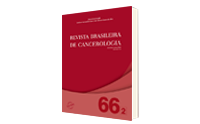Therapeutic Management of Carious Injuries in Chronic Graft-Versus-Host Disease Patients: Case Report
DOI:
https://doi.org/10.32635/2176-9745.RBC.2020v66n2.932Keywords:
Cariostatic Agents, Graft vs Host Disease, Oral Manifestations, Case ReportsAbstract
Introduction: Chronic graft-versus-host disease (cGVHD) is the main cause of morbidity and mortality after allogeneic hematopoietic stem cell transplantation (HSCT-alo). Case Report: Dental follow-up of a 59-yearold male patient, with initial diagnosis of acute myeloid leukemia, who underwent HSCT-alo in May 2017. At D+ 224, the patient developed a condition of GVHD affecting the skin, oral cavity and gastrointestinal tract, but with still healthy teeth. On D+ 392, the patient complained of dry mouth, oral lesions were observed, and sialometry was 0.024mL/min, with evolution of carious lesions on teeth 17, 15, 22, 25, 27, 38, 45 and 46. At D+ 560, the patient still had oral GVHD and the progression of caries was observed in numerous teeth. Treatment and Results: The therapeutic management adopted consisted of the use of silver diamine fluoride due to its cariostatic property with reduced tooth pain and later dental restorations were performed. In addition, the patient received guidance about diet, maintenance of oral hygiene and - use of oral lubricant to ease xerostomia. Conclusion: It was observed in this clinical case that silver diamine fluoride was effective in controlling the evolution of caries and reducing tooth pain in adult patients. It is evident the importance of training dentists on the knowledge about the use of cariostatic resources in patients with changes in the quality and quantity of saliva, such as patients with oral GVHD.









